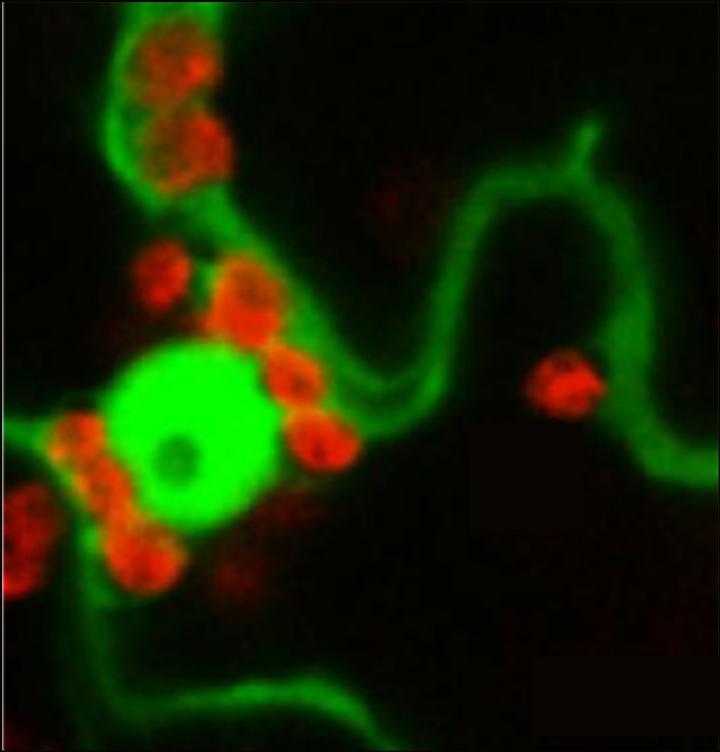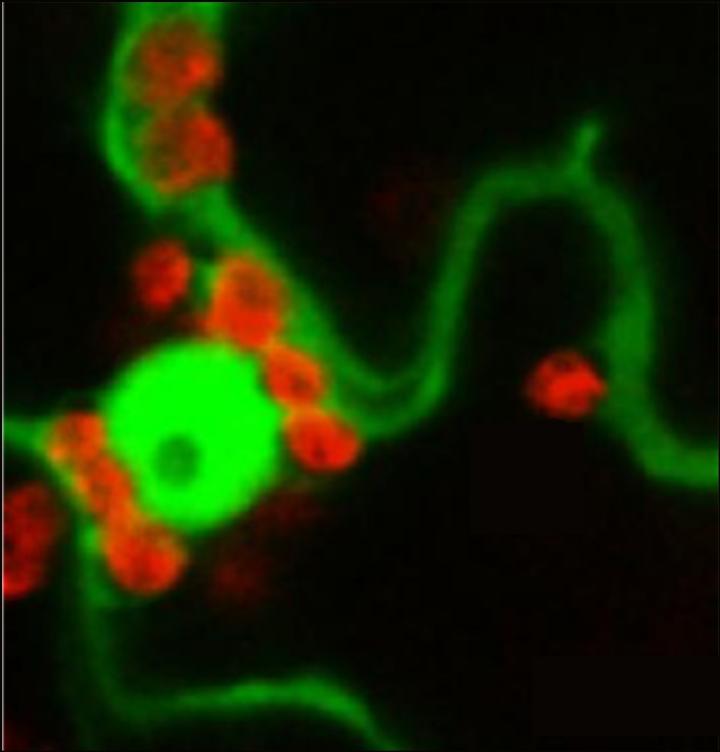
Credit: University of Exeter
Plants use hydrogen peroxide (H2O2) – best known for use in bleach and hair treatments – to control how their cells react to varying levels of light, new research shows.
The chemical is a by-product of photosynthesis in parts of plant cells called chloroplasts.
The signalling role of hydrogen peroxide had previously been suspected, but this study – by the University of Exeter and the University of Essex – is the first to discover where and how it happens.
"It's important for plants to be able to detect how much light there is, so they can make the most of it for photosynthesis," said Professor Nick Smirnoff, of the University of Exeter.
"They also have to adjust to protect themselves, as high levels of light can damage leaves – similar in some ways to how we humans get sunburn on our skin."
Professor Phil Mullineaux, of the University of Essex, said: "We know that there are a lot of different signals sent to cell nuclei to switch on genes and reorganise the way cells work, but this is the first time these signals have been observed moving from the chloroplasts (where photosynthesis takes place) to the nucleus."
The study was funded by the UK Biotechnology and Biological Sciences Research Council (BBSRC).
Using a fluorescent protein that detects hydrogen peroxide, the researchers observed how H2O2 moves from chloroplasts and can be detected in cell nuclei.
Plants' genes are located in the nuclei, and the process discovered shows how plants activate the genes needed for the leaves to adapt to the potentially damaging effects of bright light. This process of chloroplasts communicating with the nucleus ensures that plants continue to protect photosynthesis and adjust to prevailing conditions. Photosynthesis in crop plants determines how well they grow and yield.
The scientists also found that some of the chloroplasts which produce the H2O2 signal are attached to the cell nucleus, allowing them to pass the chemical effectively.
Lead author Dr Marino Exposito-Rodriguez, formerly of the University of Exeter but now at the University of Essex, said: "This breakthrough was made possible by the development of the hydrogen peroxide fluorescent protein sensors, which allowed us to observe the movement of H2O2 in plant cells in real time."
###
The paper, published in the journal Nature Communications, is entitled: "Photosynthesis-dependent H2O2 transfer from chloroplasts to nuclei provides a high-light signalling mechanism."
Media Contact
Alex Morrison
[email protected]
01-392-724-828
@uniofexeter
http://www.exeter.ac.uk
############
Story Source: Materials provided by Scienmag





